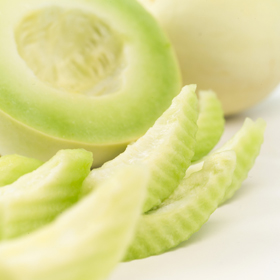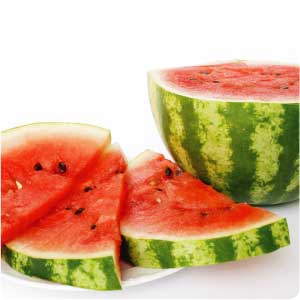I never really know how to get the ripe stuff at the store when it comes to fresh fruits and vegetables. Some things are easy, like bananas and apples, but melons and things that are a little more secretive about their fleshy insides are quite vexing to me. I just bought a bag full of nectarines that were neither ripe nor delicious. I never know if the fruit in question will ripen up or if it’s just bad and will only get worse.
So. I’m diving into my old school textbooks to learn about selecting fruits and vegetables. I must have skipped reading that section at the time, and had quite forgotten that little vault of useful information in my recipe cupboard until just the other day. I’m glad we’ve finally found each other. Goodbye to undesirably crisp, sour, tasteless fruit.
I will be posting a series on choosing different fruits and vegetables over the next little while. My food science teacher, Janet Stocks, at BYU wrote the textbook, and all the information will be coming from handouts and texts I received in her class, so she’s really the genius behind all of this.
Melons
Cantaloupe

Cantaloupe is a summer fruit, usually available between March and September. You can probably buy melons all year round, but they will be least expensive in season. The three signs of maturity are as follows:
- The stem should be gone. If some of the stem remains attached, the melon is not mature.
- The veining should be thick, course, and corky, and should stand out more drastically in some places than in others.
- The base skin color should be pale yellowish, not green.
A ripe melon will have a noticeable cantaloupe aroma and will yield to gentle pressure on the bottom end. An overripe melon will be very yellow, soft along the entire rind, and the flesh will be soft and watery.
P.S. You might be interested in how to cut a cantaloupe too.
Honey Dew

Honey dew is also a summer fruit, but unlike cantaloupe, honey dew melon has a smooth rind rather than a veiny and coarse one, and has more of an oval shape. The rind color is very light, ranging from creamy white to creamy yellow, and the stem doesn’t not separate from the fruit when ripe but must be cut.
A honey dew melon is mature when the rind is soft and velvety and has the same fruity aroma and yielding to gentle pressure as cantaloupe. An overripe honey dew melon is stark white or greenish white in color.
Watermelon

Watermelons are also at their peak in the summer months, June, July, and August. Determining the quality of a watermelon before it is cut open is very difficult , but look for a melon that has a smooth rind with a matte finish, not dull or shiny, with rounded out ends, and a creamy color on the underside.
The inside flesh should be firm and red with no white streaks, and seeds should be dark brown or black (unless it is a seedless watermelon, in which case the seeds will be white.) An overripe melon will have watery and stringy flesh and white seeds.
I hope this will help you select more juicy and delicious fruit! Check back tomorrow to learn about selecting mature and ripe berries.




{ 5 comments… read them below or add one }